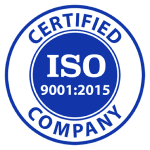Value Propositions
All value propositions should have quantitative components that fall into at least one of four benefit categories.


Hard Cost Savings

Productivity Gains

Revenue Growth

Risk Mitigation
As you formulate your value models within or across these benefit categories, be prepared to demonstrably present to the buyer organization CFO, CIO and other C Level executives, how each of the individual components add up to the larger ROI number. Your product or services’ expense should ideally be funded through the savings, gains, revenue projections or mitigated risk.
Present your case and pricing as if you are the buyer of your solution. With the right package, your buyer will be considered a hero within their organization for bringing your product, at a steal price.
Building Value Propositions: Leverage What Works
We know that many sellers are able to win business without ROI tools. Sellers are good at telling stories. Sellers like their PowerPoint presentations.
Typically, sales presentations contain 3 to 5 core value propositions statements which sales reps are good at learning and re-telling. Often those core value propositions are represented effectively with icons and images.
While our platform is flexible enough to generate any visualization or output, we leverage the existing marketing and sales assets that have been proven to work in the field.
Know What Works and What Doesn't. Enjoy shorter sales cycles, maximized deal sizes, and higher win rates.



